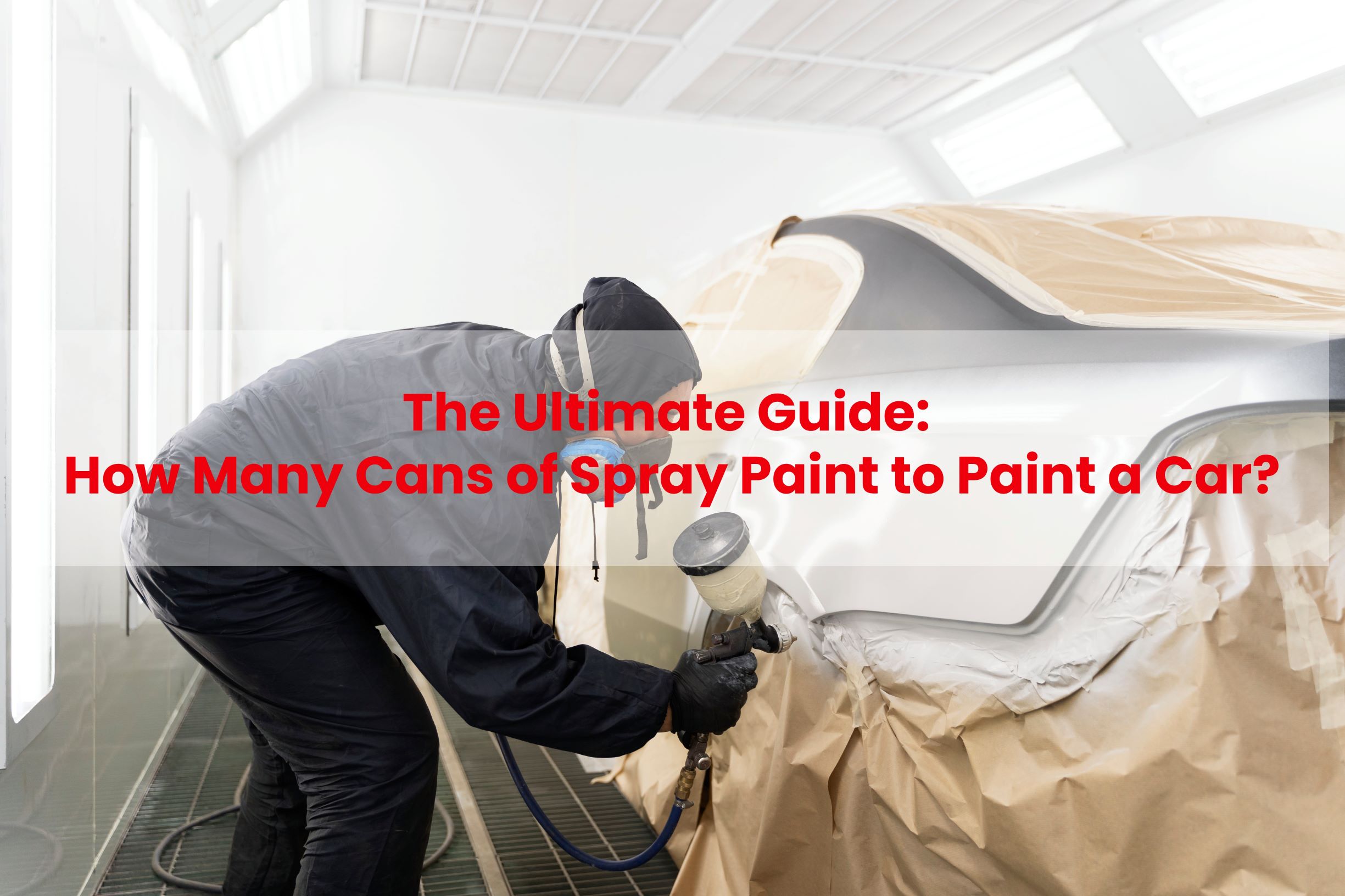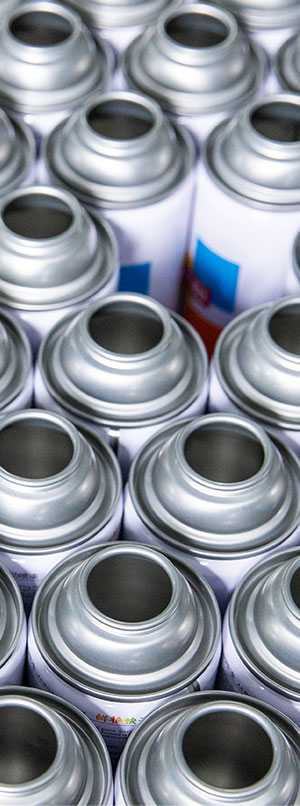The desire to revitalize your vehicle with a fresh coat of color is one of the most popular and ambitious DIY automotive projects. The first question every enthusiast or budget-conscious car owner asks is: “How many cans of spray paint to paint a car?”
While the appeal of a professional-grade finish at home is strong, the answer is complex. It’s not a simple one-size-fits-all number, but rather a calculation influenced by your car’s size, the desired finish, the type of paint, and your application technique.
At SANVO, we provide high-quality acrylic aerosol spray paint, widely used by both DIYers and business professionals in the auto industry. Based on decades of expertise in fine chemical products, we’ve put together this comprehensive guide to help you accurately estimate your material needs for a flawless automotive finish.

The Quick Answer vs. The Realistic Total
If you are only doing a touch-up or painting a single panel, the answer is simple. But for a full car respray using standard 400ml aerosol cans, you need to think in terms of a complete system: primer, basecoat (color), and clear coat.
The most common, but often misleading, estimate is just for the color/basecoat layer. A small sedan might only need 6–8 cans of color paint. However, to achieve a durable, glossy, and professional result, you must account for all three stages.
For a quality, complete automotive paint job using Sanvo’s Fast-Drying Acrylic Spray Paint and related products, here is a realistic estimate of the total number of cans (Primer + Basecoat + Clearcoat) you should plan for:
| Vehicle Size Category | Estimated Total Cans (400ml) |
| Compact Car (e.g., Small Hatchback) | 20 – 30 Cans |
| Mid-Sized Sedan/Coupe | 30 – 40 Cans |
| Large SUV or Truck | 40 – 60+ Cans |
A Comprehensive Breakdown: Paint by the Layer
To truly understand how many cans of spray paint to paint a car, you must break down the process into its necessary stages. Each layer requires a specific type of paint and a calculated number of coats for optimal performance and adhesion, which is one of the hallmarks of SANVO’s formulations.
1. The Foundation: Primer
The primer creates a smooth, uniform surface and ensures superior adhesion for the color coat. Skimping on primer will hurt the final result and may require more expensive basecoat to achieve coverage.
- Requirement: 2 to 3 even coats.
- Estimate: Approximately 4 to 6 cans for a mid-sized sedan.
2. The Color: Basecoat
The basecoat is the most critical aesthetic layer. This is where the color is applied.
- Requirement: 2 to 4 wet coats. Light, low-opacity colors (like red, yellow, or metallic silvers) may require more coats than a solid black or white to achieve full coverage and color rendering.
- Estimate: Approximately 8 to 16 cans for a mid-sized sedan. If you choose a complex custom color or a low-hiding shade, aim for the higher end of this range.
3. The Protection: Clear Coat
The clear coat provides the deep gloss, UV resistance, and crucial durability against chipping and weather—something our high-quality acrylic formulas are known for. This is where many DIYers fail to apply enough.
- Requirement: 3 to 5 thick, glossy coats for maximum protection.
- Estimate: Approximately 10 to 18 cans for a mid-sized sedan, as you often apply more clear coat than basecoat for a lasting professional finish.
Four Critical Factors Influencing Your Can Count
The estimates above are guidelines. Your specific project might deviate based on these key factors, which every smart DIYer or business workshop should consider:
1. Vehicle Size and Panel Surface Area
This is the most obvious factor. A smart car has significantly less surface area than a long-bed pickup truck or a large commercial van. When estimating, consider the square footage of the panels. For example, painting a single fender might require 2-3 cans of basecoat and 3-4 cans of clear coat. When you multiply that across 12+ main panels, the can count quickly rises.
2. The Color and Coverage (Hiding Power)
Some pigments simply do not “hide” the old paint or primer as efficiently as others. If you are painting a dark car white, or using a vibrant, lead-free color, you will need extra coats of basecoat to prevent the underlying color from showing through.
SANVO’s commitment to excellent coverage and color rendering in our acrylic spray paints helps minimize this, but planning for an extra 25% of your color coat is wise for tricky hues.
3. Application Technique (The “Overspray” Factor)
Your spraying method dramatically impacts how much paint is consumed. If you spray too quickly or too far from the surface (which we recommend be about 6 to 12 inches for optimal atomization with our adjustable nozzles), a significant amount of the aerosol paint will be lost to overspray. Consistent, light, even passes are key to maximizing the efficiency of your 400ml spray can.
4. The Condition of the Original Paint
If you are painting over a perfectly prepped, smooth, and monochromatic primer, you will use less paint. If you are trying to cover heavy sanding marks, deep chips, or mismatched filler spots, you will need additional primer and potentially more basecoat to achieve a uniform finish.
SANVO: Your Partner for Automotive Excellence (B2C & B2B)
Whether you are an individual enthusiast tackling your first car project or a repair shop requiring a reliable supplier for bulk orders, SANVO is your trusted source for high-quality aerosol paint.
We understand that a successful DIY car paint job depends on both the user’s skill and the quality of the product. Our spray cans are formulated for easy performance, fast drying, and a durable, non-chipping texture that stands the test of time.
For our individual customers, the ease of use and professional results of our acrylic spray paint make the DIY process manageable. For our business partners—including vehicle repair shops and distributors—our robust production capacity and customized options ensure you receive the exact colors and volumes you need, with the consistency and quality required by the auto industry.
Conclusion
Accurately calculating how many cans of spray paint to paint a car is the first step toward a perfect result. By planning for all three stages—Primer, Basecoat, and Clear Coat—and choosing a high-quality product with excellent coverage, like SANVO Acrylic Spray Paint, you ensure your next automotive project will be a success.
Don’t guess on your supplies. Contact us today to discuss your project, or explore our full range of colors and automotive finishes to get started on your car’s stunning new look.

